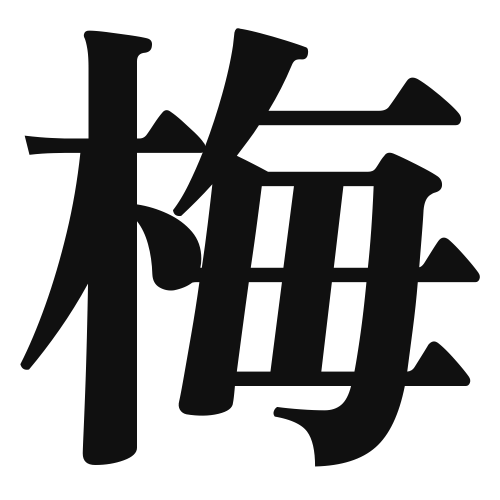1. Overview of Meaning
The kanji “梅” (ume) means “plum” in English. It refers to the plum tree and its fruit, which are significant in Japanese culture, especially in the context of spring and traditional cuisine.
2. Formation and Radicals
Formation of the Kanji: The kanji “梅” is a phonetic-ideographic character (形声文字). It combines the radical for “tree” (木) with a phonetic component that suggests its pronunciation.
Radical: The radical of “梅” is 木 (tree), indicating its association with nature and plants.
3. Examples of Usage
Common Words and Phrases:
- 梅酒 (umeshu) – plum wine
- 梅干し (umeboshi) – pickled plum
Example Sentences in Daily Conversation:
- 春になると、梅の花が咲きます。 (In spring, the plum blossoms bloom.)
- 梅干しはご飯と一緒に食べることが多いです。 (Pickled plums are often eaten with rice.)
4. Synonyms and Antonyms
Similar Kanji:
- 桃 (momo) – peach, which is similar in that it is also a fruit tree, but it has a different flavor and cultural significance.
Antonyms:
- 桜 (sakura) – cherry blossom, which represents a different season and has a contrasting cultural symbolism.
5. Cultural and Historical Background
The plum tree holds a special place in Japanese culture, symbolizing resilience and the arrival of spring. It is often celebrated in festivals and is a popular subject in traditional art.
Proverbs and Idioms:
- 梅は咲いて桜は散る (Ume wa saite sakura wa chiru) – “The plum blossoms bloom while the cherry blossoms fall,” which reflects the transient nature of beauty.
